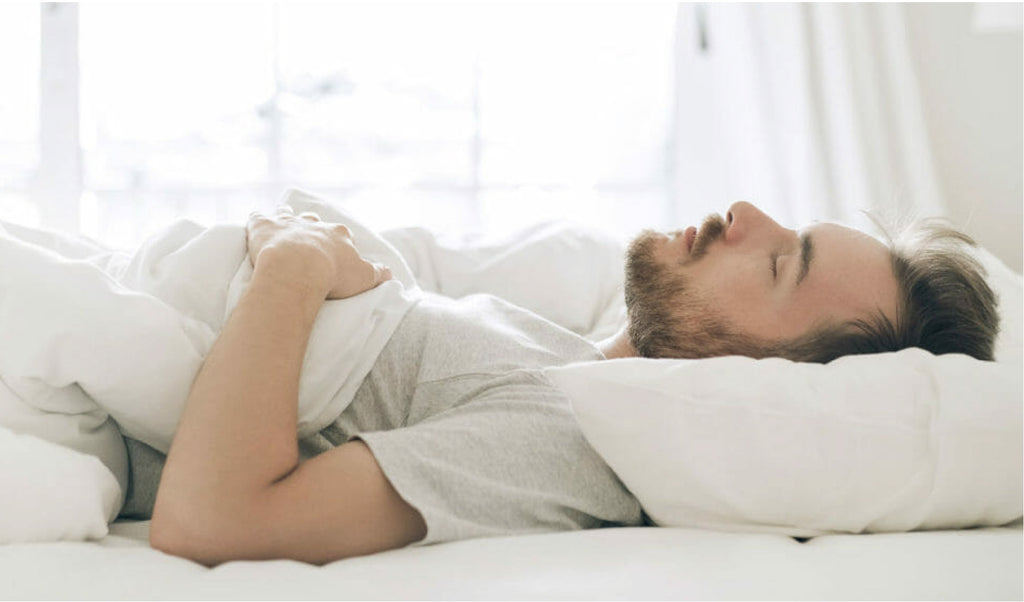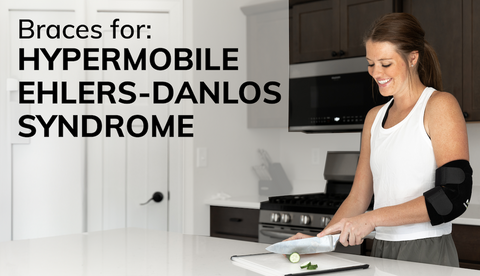Relieve Lower Back Pain While Sleeping With These 4 Steps
Back pain when sleeping can sap your energy and leave you dreading another restless night. But getting the rest needed to get rid of lower back pain while sleeping can be quite the challenge. Some wake up with worse back pain in the morning than when they hit the sheets. Many get caught up in a cycle where they desperately need a good night’s sleep for their back to recover (not to mention for their general health) but are unable to do so because back pain is keeping them up at night. This 4 step guide will help you get some much needed sleep by teaching you how to sleep with lower back pain.
-
Select the Best Mattress for Back Pain
What mattress is best for lower back pain? Up until recently, it was thought that those dealing with lower back pain in the morning should switch to a firmer mattress. But experts have moved away from that one-solution-fits-all thought process. Your mattress should support the natural curves of your body while keeping you comfortable. Ultimately, you will need to spend some time trying out different mattresses to get the right fit. Many companies even allow you to try out their product for a few weeks or even months and return it if the product is not right for you.
Some other key considerations include the age of your mattress (these should be replaced every nine to 10 years), temperature management and whether it’s big enough for you to get into a comfortable sleeping position.
Pillows for Lower Back Pain
Much like a mattress, a pillow should support the natural curve of your neck and keep it aligned with the chest and lower back while allowing you to get comfortable. You want your alignment to feel natural and not overly propped or flat. Just a tip, pillows also have a shelf life. Most experts recommend replacing the pillow you rest your head on every year or so. But hang onto those old pillows; you can use them to support other areas of the body.
-
Practice Healthy Sleep Posture
Keeping your body aligned as you sleep is one of the most important things you can do to prevent back pain after sleeping. Specifically, your ears, shoulders, and hips should be lined up when you sleep. Sleeping on your back is the healthiest sleeping posture. Back sleeping makes it so your weight is evenly distributed from your head to your toes and relieves added stress on the affected areas. This position keeps your internal organs and spine in alignment for your body's healthiest function.
Stomach sleeping can lead to more back pain from the additional stress on the curve of your back. Side sleeping can also cause stress on your upper and lower back from the misalignment of your shoulders and hips. If you must sleep on your side due to surgery, pregnancy or other factors, be sure to place a pillow between your knees to allow your hips better alignment.
How to Use Pillows For Lower Back Pain:
- Lay flat on your back.
- Place a pillow underneath your knees and keep your spine neutral. The pillow works to keep the curve in your lower back.
- You can also place a small, rolled up towel under the small of your back for added support.
Back Brace for Sleeping
While wearing a back brace to bed should not be a long-term solution, doing so can give you short-term relief of a sore back at night. BraceAbility’s lower back support for sleeping has a pocket that can hold a gel pack for heat or ice therapy. This is a great way to relax the back at night. If the cause of your bad back is from recent injury, the compression and support can bring down inflammation and speed along healing.
-
Use Good Posture During the Day
Your poor posture practices during the day can derail your efforts to counteract them at night. To avoid back pain during the night, it is essential to practice good posture during the day. Focus on sitting or standing up straight with your shoulders back and your whole body in alignment. That might sound like a simple enough task, but bad posture habits can be tough to break. For that reason, many people turn to a posture brace that can keep you from slouching or hunching forward when your attention is on other things.
-
Work Your Core
Before completing a marathon, you will need to build up your muscles and endurance, eat right and get enough sleep. You’ll have to commit to an all-encompassing approach to reach the finish line. A similar mindset is needed to cure your early morning back pain for good. You need to give your body the tools it needs to ease the pain that keeps you up every night.
This means making sure you have a strong, flexible core that can support your spine. Many of us sit at a desk for eight or more hours a day, which does little to engage your back, hip, and abdominal muscles. Therefore, it’s a good idea to make a point of doing some exercises to increase the strength and flexibility of your core each day.
Doing so can correct muscle imbalances that may cause your back to hurt or spasm at night, plus it can improve your posture during the day and at night. You might even try out taking microbreaks to get your body moving throughout the workday. Outside of the office, you can try some exercises to strengthen your back or some stretches for improving posture.












